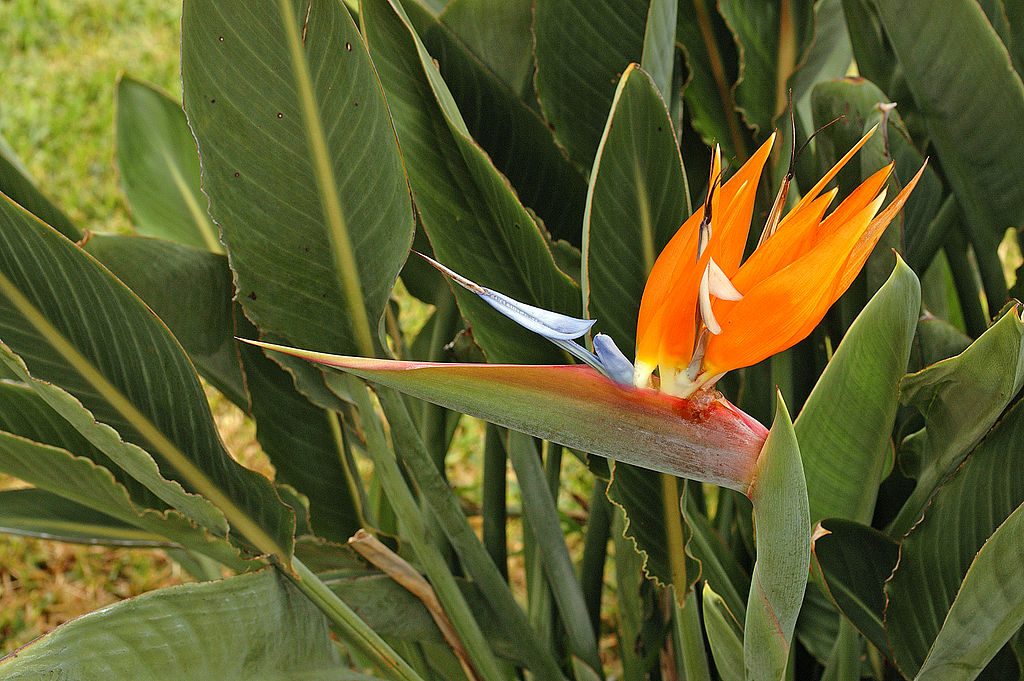
Indigenous to South Africa, this tender evergreen herbaceous perennial is a member of the Strelitziaceae, a small family closely related to bananas. The plant grows from a rhizome and forms a stiff clump up to 4′ tall consisting of paddle-shaped gray- green leaves on petioles up to 3′ long. From spring to fall, green, hard, beak-like sheaths, called spathes, appear above the foliage perpendicular to the stem The spathes resemble a bird’s head and provides a perch for the birds that fertilize the flowers. The flowers emerge one by one and consist of 3 orange sepals and 3 vivid blue petals, two of which are joined to form an arrow-shaped nectary. When birds come to drink the nectar, the third petal opens to expose the anther and cover their feet with pollen. Birds of paradise are popular garden plants in frost free climates and good house plants in cooler climates where they can grown in containers and moved out doors during the summer. They give a tropical look to a garden and are a good choice for borders, patios, and Mediterranean gardens. The common names crane flower and bird of paradise come from the resemblance of the flowers to birds. The genus name, Strelitzia, honors Charlotte Sophia of Mecklenburg-Strelita (1744-1818) Queen of George III. The specific epithet, reginae, is the Latin word meaning of the queen.
Type: Tender evergreen herbaceous perennial
Bloom: Large, blue and orange flowers resembling bird heads from spring to fall
Size: 4-6′ H x 1-3′ W
Light: Full sun to light shade
Soil: Fertile, medium moist, well-drained, drought tolerant once established
Hardiness: Zones 10-12
Care: Remove flowering stalks after bloom
Pests and Diseases: Generally healthy but can be damaged by mealy bugs and scale.
Propagation: Division
Companion Plants: Agave, blue chalkstick, aeonium
Outstanding Selections:
‘Glauca’ (grayish leaves)
‘Humilis” (3’ tall)
‘Ovata’ (round leaf blade)
Photo Credit: Martina Nolte Creative Commons Wikimedia